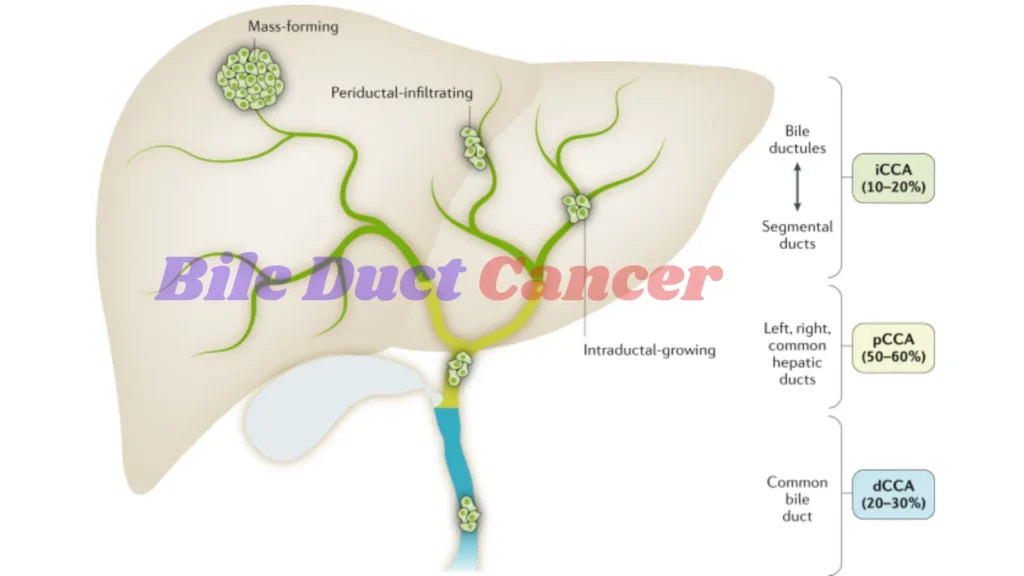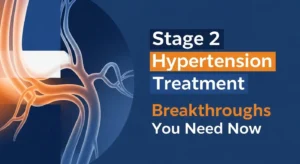Bile duct cancer, also known as cholangiocarcinoma, is a rare but serious malignancy that forms in the bile ducts. These thin tubes carry bile from your liver and gallbladder to your small intestine to help digest fats. Though relatively uncommon, with approximately 8,000 new cases diagnosed annually in the United States, understanding this condition is crucial for early detection and effective treatment. This guide provides essential information about bile duct cancer types, symptoms, diagnosis methods, treatment options, and prognosis.
What Is Bile Duct Cancer?
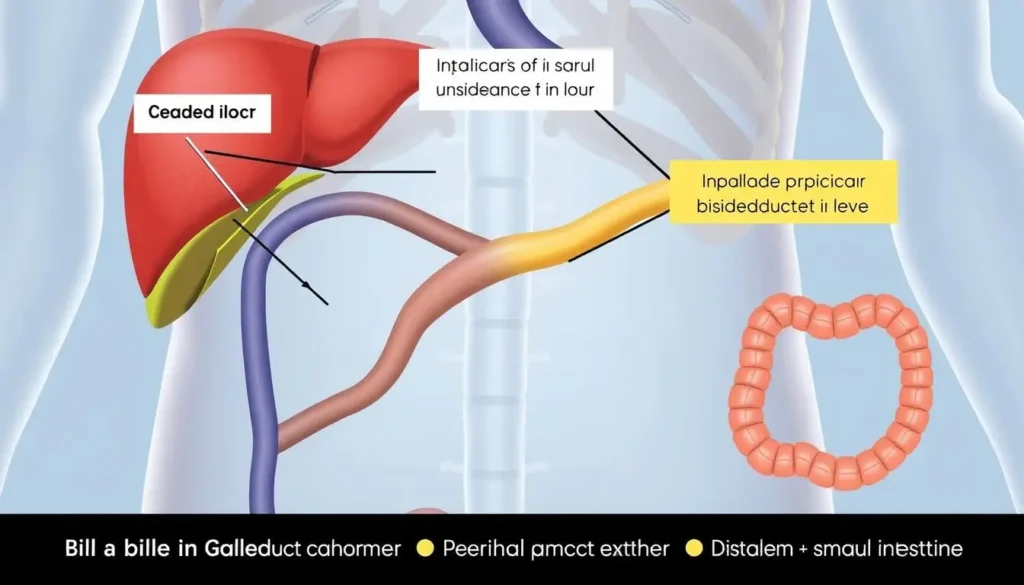
Cholangiocarcinoma is a cancer that starts in the cells lining the bile ducts. Bile ducts are part of the biliary system, which produces and transports bile – a digestive fluid that helps break down fats and eliminate waste from the liver. When cells in the bile duct begin to grow abnormally and uncontrollably, they can form tumors that may block bile flow and spread to nearby tissues.
This bile duct malignancy is typically aggressive and often diagnosed at advanced stages when symptoms become noticeable. Most cases occur in adults over 65 years of age, though risk factors can lead to earlier development.
Understanding Your Diagnosis
If you or a loved one has been diagnosed with bile duct cancer, speaking with specialists who focus on this specific cancer type can provide valuable insights.
Types of Bile Duct Cancer
Bile duct cancer is classified based on where it develops in the bile duct system. The location affects symptoms, treatment approaches, and prognosis.
Intrahepatic Cholangiocarcinoma
Intrahepatic bile duct cancer starts in the smaller bile ducts inside the liver. It accounts for approximately 10% of all bile duct cancers. This type is sometimes confused with hepatocellular carcinoma (primary liver cancer), but they are distinct diseases requiring different treatment approaches.
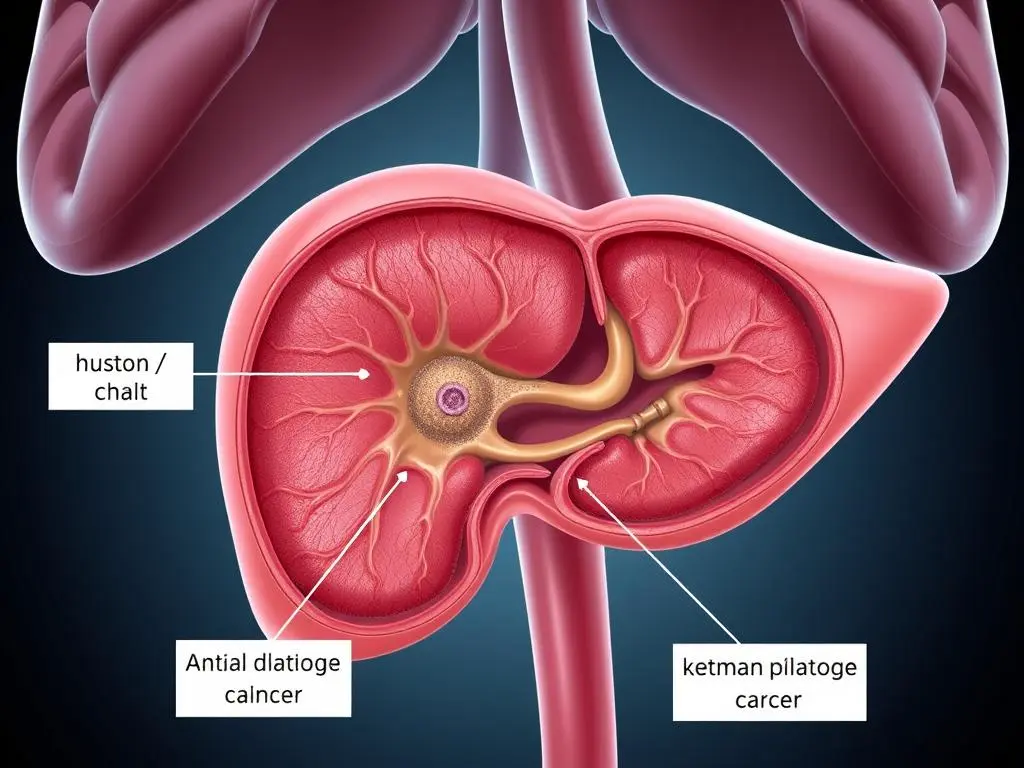
Extrahepatic Cholangiocarcinoma
Extrahepatic bile duct cancers form outside the liver and are further divided into two types:
Perihilar (Hilar) Cholangiocarcinoma
Also known as Klatskin tumors, these form where the right and left hepatic ducts exit the liver and join to create the common hepatic duct. Perihilar cholangiocarcinoma is the most common type, representing 40-60% of all bile duct cancers.
Distal Cholangiocarcinoma
These tumors develop in the portion of the bile duct closest to the small intestine, often near the pancreas. Distal bile duct cancer accounts for 20-40% of bile duct cancer cases and may cause symptoms earlier due to bile duct blockage.
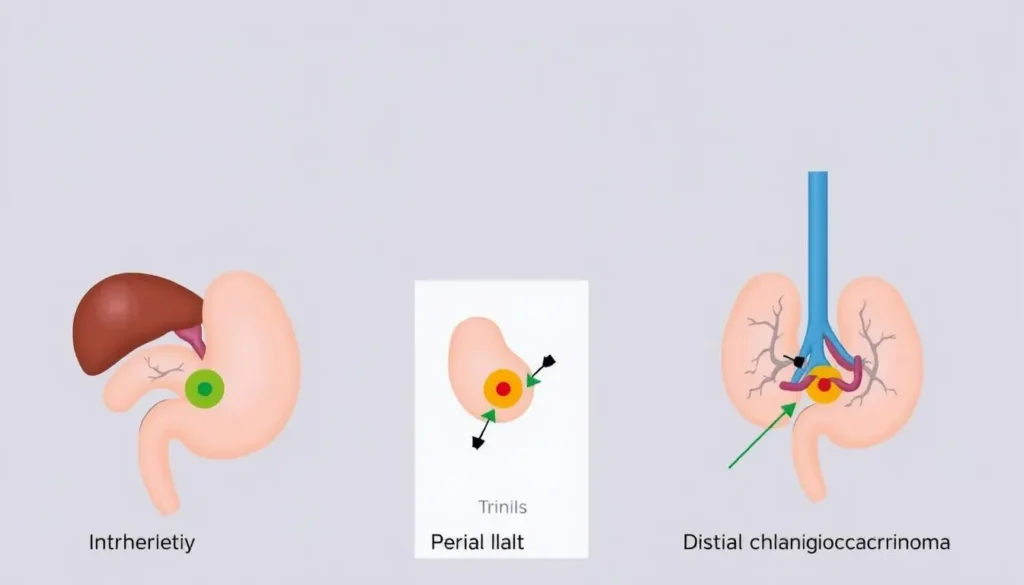
Symptoms of Bile Duct Cancer
Early-stage bile duct cancer often produces no symptoms, which contributes to late diagnosis. Symptoms typically appear when the cancer blocks a bile duct, causing bile to build up in the liver.
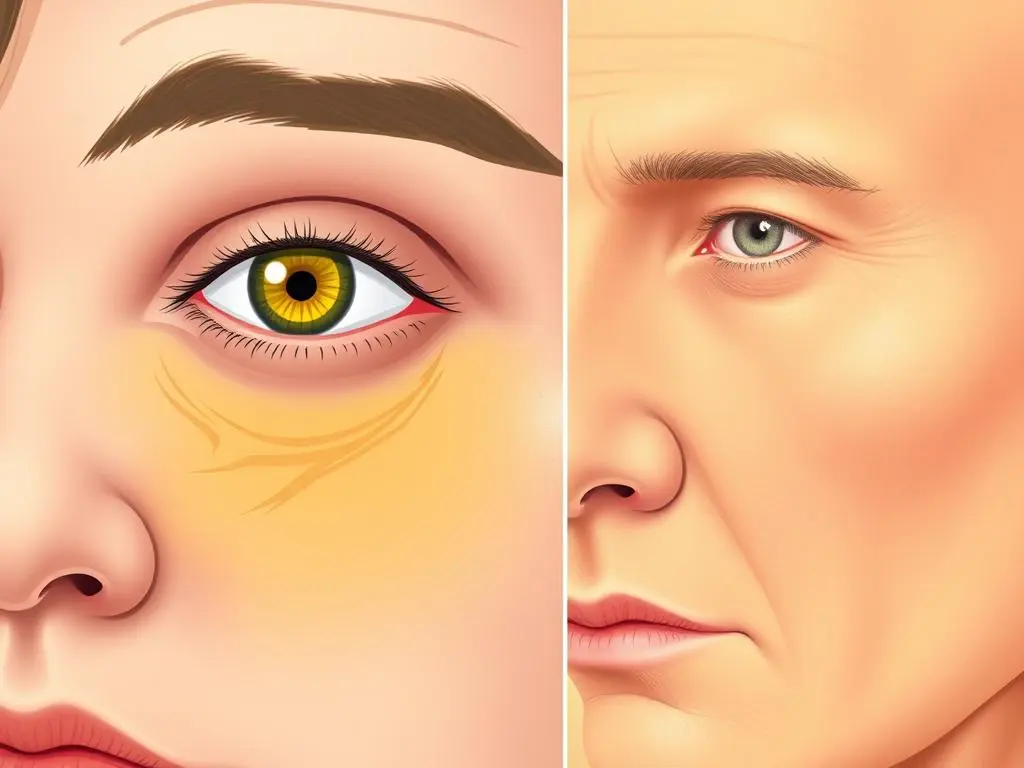
Common Symptoms
- Jaundice (yellowing of the skin and whites of eyes)
- Itchy skin (pruritus)
- Dark urine
- Light-colored or greasy stools
- Abdominal pain, typically in the right upper quadrant
- Unexplained weight loss
Advanced Symptoms
- Fever and chills
- Night sweats
- Fatigue and weakness
- Loss of appetite
- Nausea and vomiting
- Enlarged liver or gallbladder
Important: If you experience jaundice, persistent abdominal pain, or unexplained weight loss, consult a healthcare provider promptly. While these symptoms can be caused by conditions other than bile duct cancer, early evaluation is essential.
Risk Factors for Bile Duct Cancer
While the exact cause of bile duct cholangiocarcinoma remains unknown, several factors increase the risk of developing this malignancy. Understanding these risk factors can help identify individuals who might benefit from closer monitoring.
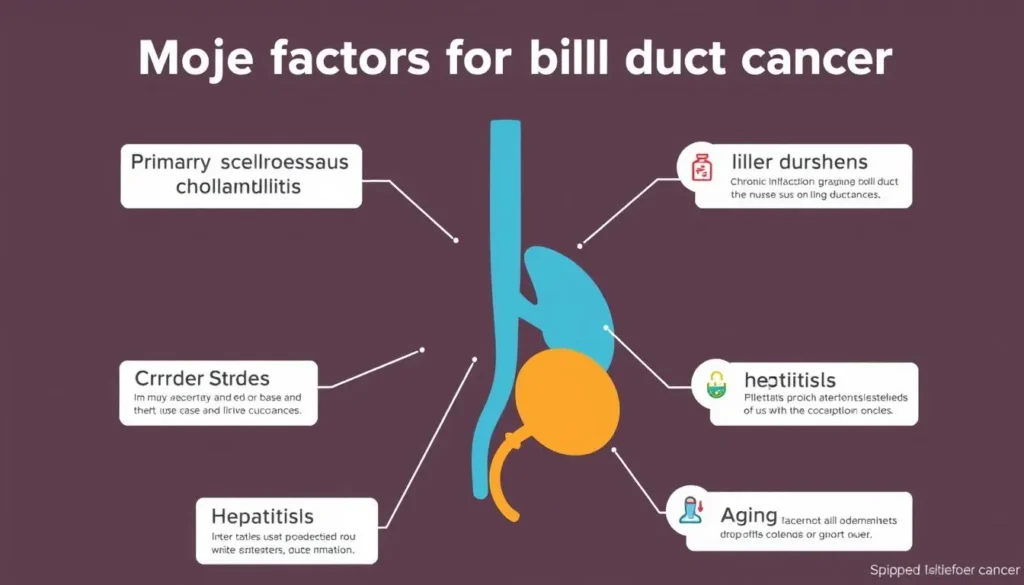
Medical Conditions
- Primary sclerosing cholangitis (PSC)
- Bile duct stones or cysts
- Cirrhosis of the liver
- Chronic inflammatory bowel disease
- Hepatitis B or C infection
Lifestyle Factors
- Smoking
- Excessive alcohol consumption
- Obesity
- Diabetes
- Exposure to certain toxins
Demographic Factors
- Age (most common in people over 65)
- Southeast Asian heritage
- Liver fluke parasitic infection
- Family history of bile duct abnormalities
Having risk factors does not mean you will develop bile duct cancer. Conversely, some people with bile duct cancer have no identifiable risk factors. Regular check-ups are important, especially if you have conditions that increase your risk.
Diagnosis of Bile Duct Cancer
Diagnosing bile duct cancer often involves multiple tests and procedures. Early diagnosis is challenging because symptoms typically don't appear until the cancer has advanced.
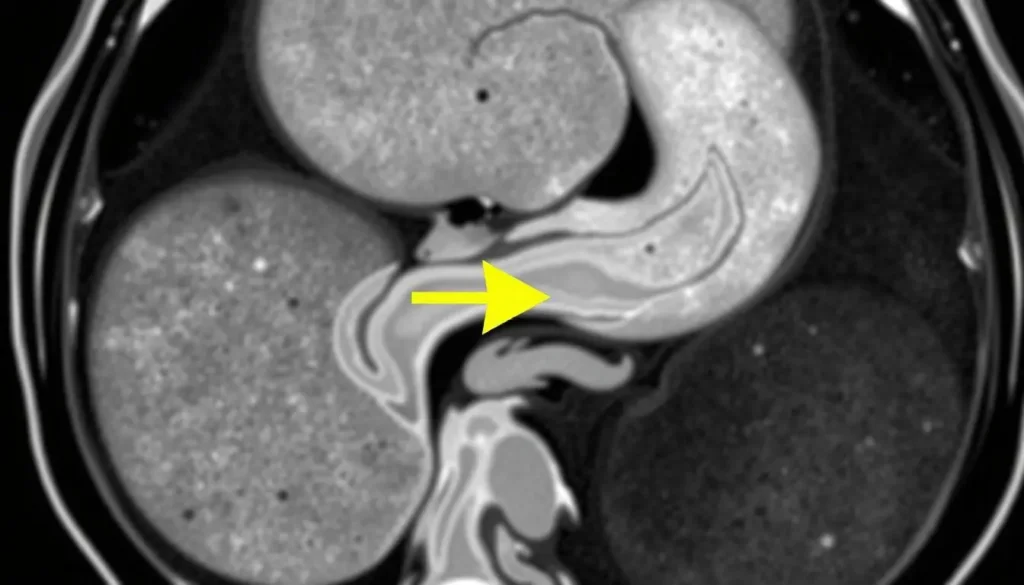
Diagnostic Tests and Procedures
| Diagnostic Method | Purpose | Procedure Details |
| Blood Tests | Check liver function and tumor markers | Measures liver enzymes, bilirubin, and tumor markers like CA 19-9 and CEA |
| Ultrasound | Initial imaging to detect bile duct blockage | Non-invasive sound wave imaging of the liver and bile ducts |
| CT Scan | Detailed images of bile ducts and surrounding tissues | X-ray imaging from multiple angles with contrast dye |
| MRI/MRCP | Detailed bile duct visualization | Magnetic imaging specifically designed to show bile and pancreatic ducts |
| ERCP | Examine bile ducts and collect tissue samples | Endoscope inserted through mouth to bile ducts; can place stents |
| PTC | Access bile ducts when ERCP isn't possible | Needle inserted through skin directly into bile ducts |
| Biopsy | Confirm cancer diagnosis | Tissue sample collection for microscopic examination |
Staging Bile Duct Cancer
After diagnosis, staging determines how far the cancer has spread. Staging helps guide treatment decisions and provides information about prognosis.

Early Stages (0-I)
Cancer is confined to the bile duct lining (Stage 0) or has grown into the bile duct wall (Stage I).
Intermediate Stages (II-III)
Cancer has spread to nearby tissues, lymph nodes, or both, but remains regionally contained.
Advanced Stage (IV)
Cancer has spread (metastasized) to distant organs such as the lungs, bones, or abdominal cavity.
Treatment Options for Bile Duct Cancer
Treatment for bile duct cholangiocarcinoma depends on the cancer's location, stage, and the patient's overall health. A multidisciplinary approach involving specialists in surgery, oncology, and radiation therapy often provides the best outcomes.
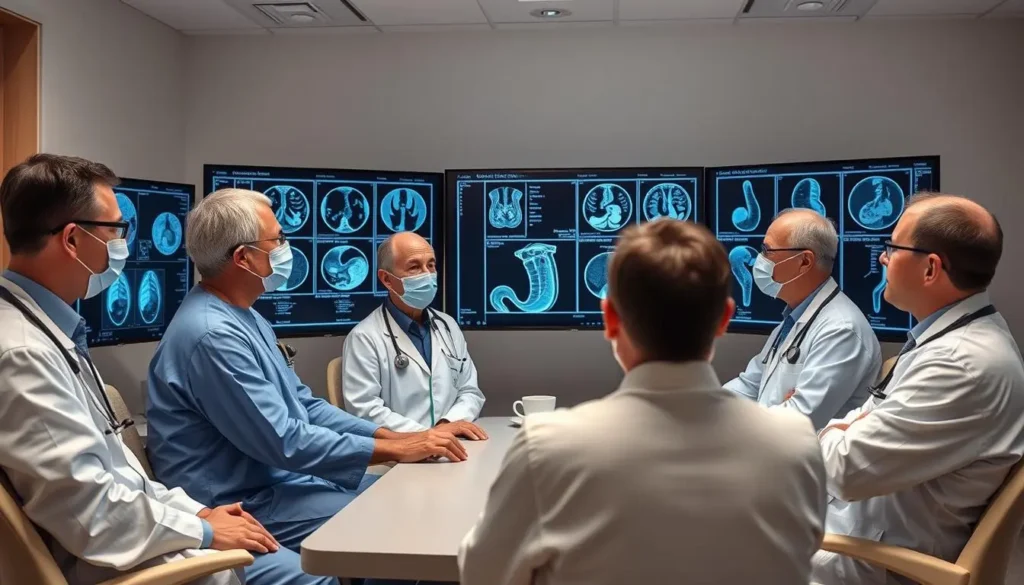
Surgical Treatments
Surgery offers the best chance for cure when bile duct cancer is caught early and hasn't spread beyond the bile ducts.
Potentially Curative Surgeries
- Bile duct resection: Removal of the affected portion of the bile duct
- Partial hepatectomy: Removal of part of the liver along with the bile duct
- Whipple procedure: Removal of the bile duct, gallbladder, part of the pancreas, and small intestine
- Liver transplantation: Replacement of the liver with a donor organ (for select cases)
Palliative Surgical Procedures
- Biliary bypass: Creates a new path for bile to flow around the blockage
- Stent placement: Insertion of a small tube to keep the bile duct open
- Percutaneous transhepatic biliary drainage: External drainage of bile when stents aren't possible
Non-Surgical Treatments
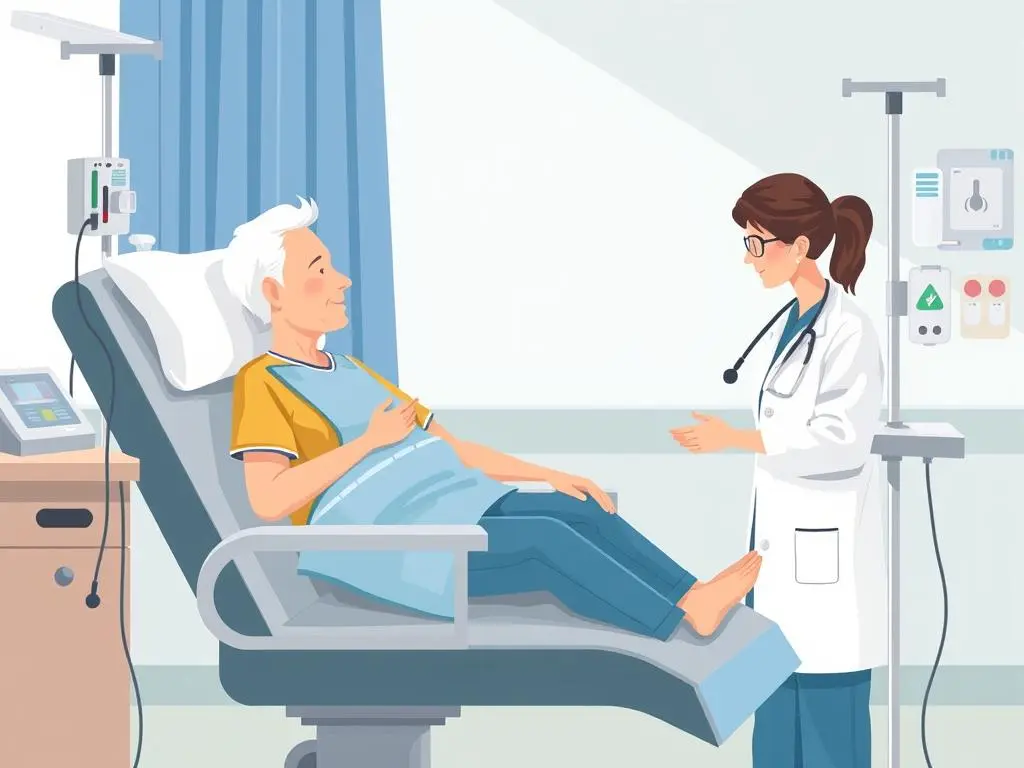
Chemotherapy
Drugs that kill cancer cells throughout the body. May be used before surgery (neoadjuvant), after surgery (adjuvant), or as the main treatment for advanced cancer.
Common regimens include gemcitabine with cisplatin or combinations with fluorouracil (5-FU).
Radiation Therapy
High-energy rays that destroy cancer cells. May be delivered externally (external beam radiation) or internally (brachytherapy).
Often combined with chemotherapy (chemoradiation) for enhanced effectiveness.
Targeted Therapy & Immunotherapy
Newer treatments that target specific genetic mutations or help the immune system fight cancer.
Biomarker testing can identify patients who may benefit from targeted therapies like FGFR inhibitors or IDH inhibitors.
Clinical Trials: Research studies testing new treatments may provide access to promising therapies not yet widely available. Ask your doctor if you might be eligible for a clinical trial.
Prognosis and Survival Rates
The prognosis for bile duct cancer varies widely depending on several factors, including the cancer's location, stage at diagnosis, whether complete surgical removal was possible, and the patient's overall health.

Factors Affecting Prognosis
Favorable Prognostic Factors
- Early-stage diagnosis
- Complete surgical removal (negative margins)
- No lymph node involvement
- Distal location (vs. intrahepatic)
- Good overall health and liver function
- Certain genetic mutations that respond to targeted therapy
Challenging Prognostic Factors
- Advanced stage at diagnosis
- Incomplete surgical removal
- Lymph node involvement
- Intrahepatic location
- Poor liver function
- Presence of certain genetic mutations
The five-year survival rate for localized bile duct cancer (confined to the primary site) ranges from 15% to 30%. For regional disease (spread to nearby structures or lymph nodes), the five-year survival rate is approximately 16%. When the cancer has metastasized to distant parts of the body, the five-year survival rate drops to about 2%.
It's important to remember that survival statistics are based on large groups of patients and cannot predict what will happen in an individual case. New treatments continue to improve outcomes for bile duct cancer patients.

Living with Bile Duct Cancer
A bile duct cancer diagnosis can be overwhelming, but there are resources and strategies to help manage both the physical and emotional aspects of living with this condition.

Managing Side Effects
Treatment for bile duct cancer can cause various side effects. Working with your healthcare team to manage these effects can improve your quality of life during treatment.
Physical Symptoms
- Jaundice management
- Pain control
- Nutritional support
- Fatigue management
- Skin care for itching
Emotional Support
- Counseling services
- Support groups
- Patient advocacy organizations
- Online communities
- Mental health resources
Practical Assistance
- Financial counseling
- Transportation services
- Home care assistance
- Legal planning
- Caregiver support
Frequently Asked Questions About Bile Duct Cancer
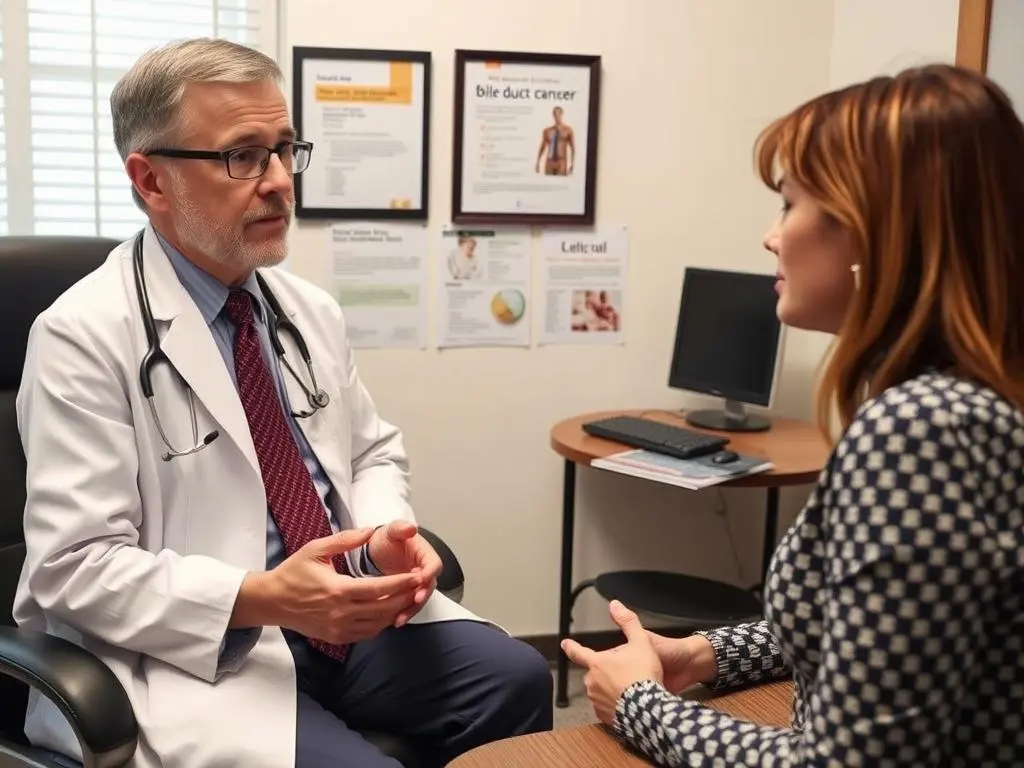
Is bile duct cancer curable?
Bile duct cancer can be cured in some cases, particularly when diagnosed at an early stage and completely removed through surgery. Unfortunately, because symptoms often don't appear until the cancer is advanced, many cases are diagnosed at later stages when cure is less likely. However, even in advanced cases, treatments can help control the cancer and improve quality of life.
What are the warning signs of bile duct cancer?
The most common warning sign is jaundice (yellowing of the skin and eyes), which occurs when a bile duct becomes blocked. Other warning signs include itchy skin, dark urine, light-colored stools, abdominal pain (particularly in the upper right side), unexplained weight loss, fever, and fatigue. These symptoms can also be caused by other conditions, so it's important to see a doctor for proper evaluation.
How is bile duct cancer different from gallbladder cancer?
While both are biliary tract cancers, they start in different locations. Bile duct cancer (cholangiocarcinoma) begins in the bile ducts, while gallbladder cancer starts in the gallbladder. They can have similar symptoms but may require different treatment approaches. Both are relatively rare cancers, though gallbladder cancer is slightly more common in the United States.
Can bile duct cancer be prevented?
There is no guaranteed way to prevent bile duct cancer, but you can reduce your risk by maintaining liver health. This includes avoiding excessive alcohol consumption, maintaining a healthy weight, protecting yourself from hepatitis B and C infections, not smoking, and seeking prompt treatment for conditions that cause bile duct inflammation or damage.
What questions should I ask my doctor about bile duct cancer?
Important questions include: What type and stage of bile duct cancer do I have? What treatment options are recommended and why? Am I eligible for surgery? What are the potential side effects of treatment? Are there clinical trials I should consider? What is my prognosis? How will treatment affect my quality of life? What support resources are available?
Moving Forward After a Bile Duct Cancer Diagnosis
A bile duct cancer diagnosis presents significant challenges, but advances in treatment approaches continue to improve outcomes for many patients. Working with a specialized healthcare team, staying informed about your condition, and accessing available support resources can help you navigate this difficult journey.
Remember that each person's experience with bile duct cholangiocarcinoma is unique. Treatment plans should be tailored to your specific situation, taking into account the type and stage of cancer, your overall health, and your personal preferences.

